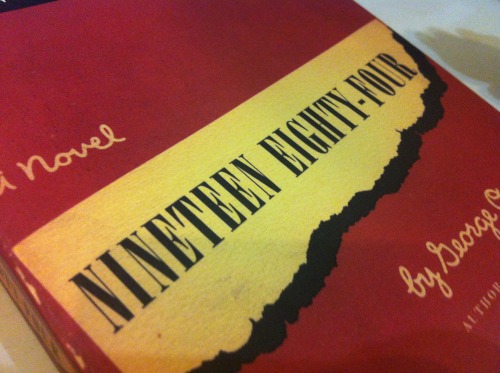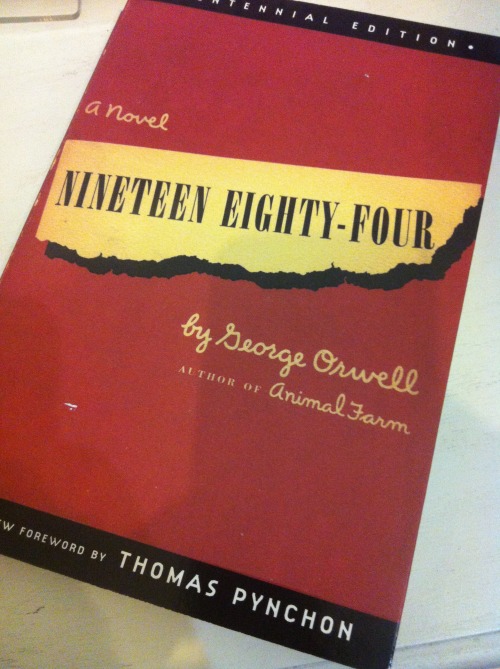“There’s As Many Atoms In A Single Molecule Of Your DNA As There Are Stars In The Typical Galaxy.

“There’s as many atoms in a single molecule of your DNA as there are stars in the typical galaxy. We are, each of us, a little universe.” - Neil deGrasse Tyson
More Posts from Vicens-anllu and Others

NGC 6357
MARTE Y JÚPITER

Cuando encuentras a alguien que te pueda entender en todas las formas y ámbitos, descubres la libertad de ser. Manten la mente libre y tu alma tambien

Located in northern California, Lassen Volcanic National Park is a true winter wonderland. Silent, snow-covered volcanoes hide magma beneath their calm surfaces – clues to the area’s three million years of volcanic activity show up in steam vents, boiling springs and bubbling mudpots. Even in winter, these hydrothermal (“hot water”) features melt nearby snow and ice. Photo by Mike Matiasek, National Park Service.







Nineteen Eighty-Four, George Orwell This edition available at: Leigh’s Favorite Books






MjX











Mars is the Mission
__
✗ @onesuv









Ask Ethan: How Does Spinning Affect The Shape Of Pulsars?
“[S]ome pulsars have incredible spin rates. How much does this distort the object, and does it shed material this way or is gravity still able to bind all of the material to the object?”
If you spin too quickly, the matter on the outskirts of your surface will fly off. If you’re in hydrostatic equilibrium, your shape will simply distort until your equatorial bulge and your polar flattening result in the most stable, lowest-energy configuration. For our Earth, this means the best place to launch a rocket is near the equator, and our planet’s polar diameter is a little more than 20 km shorter than its equatorial diameter. But what about for the fastest-rotating natural object we know of: a neutron star. While most neutron stars rotate a few times a second, the fastest one makes 766 rotations in that span, meaning that a neutron on the surface moves at about 16% the speed of light. Much faster, and could it escape? Or, perhaps, is the pulsar’s shape highly distorted, either due to that rotation or to the incredibly strong magnetic fields inside? Neutron star matter is very different from anything we’re used to, so don’t bet on any of those.
Other than the first few fractions-of-a-second, changes to neutron stars are slow and mostly inconsequential. Come find out how bad it is on this edition of Ask Ethan!
-
 amaurijuli liked this · 4 years ago
amaurijuli liked this · 4 years ago -
 arison-v liked this · 4 years ago
arison-v liked this · 4 years ago -
 transbordei-o liked this · 4 years ago
transbordei-o liked this · 4 years ago -
 daremonster10 liked this · 5 years ago
daremonster10 liked this · 5 years ago -
 gay-mafia-sports reblogged this · 5 years ago
gay-mafia-sports reblogged this · 5 years ago -
 gay-mafia-sports liked this · 5 years ago
gay-mafia-sports liked this · 5 years ago -
 kittyfuzz liked this · 5 years ago
kittyfuzz liked this · 5 years ago -
 gonegonesblog liked this · 5 years ago
gonegonesblog liked this · 5 years ago -
 bckdragon119 liked this · 5 years ago
bckdragon119 liked this · 5 years ago -
 psychedelicladybean reblogged this · 6 years ago
psychedelicladybean reblogged this · 6 years ago -
 an0nymousg0dess reblogged this · 6 years ago
an0nymousg0dess reblogged this · 6 years ago -
 an0nymousg0dess liked this · 6 years ago
an0nymousg0dess liked this · 6 years ago -
 aaliyahjds reblogged this · 6 years ago
aaliyahjds reblogged this · 6 years ago -
 huraivaoscura liked this · 6 years ago
huraivaoscura liked this · 6 years ago -
 jjjfks55 reblogged this · 6 years ago
jjjfks55 reblogged this · 6 years ago -
 roseofelegance reblogged this · 7 years ago
roseofelegance reblogged this · 7 years ago -
 foxglovedforest liked this · 7 years ago
foxglovedforest liked this · 7 years ago -
 thebest0fbea-blog liked this · 7 years ago
thebest0fbea-blog liked this · 7 years ago -
 trippinsober reblogged this · 7 years ago
trippinsober reblogged this · 7 years ago -
 bunnyofthewoods liked this · 7 years ago
bunnyofthewoods liked this · 7 years ago -
 blacksteele2014 liked this · 7 years ago
blacksteele2014 liked this · 7 years ago -
 irenefowlkes liked this · 7 years ago
irenefowlkes liked this · 7 years ago -
 lordoren33 liked this · 7 years ago
lordoren33 liked this · 7 years ago -
 rlummiss-blog1 reblogged this · 7 years ago
rlummiss-blog1 reblogged this · 7 years ago -
 spotsandots-blog liked this · 7 years ago
spotsandots-blog liked this · 7 years ago -
 monkeybuzz95-blog liked this · 7 years ago
monkeybuzz95-blog liked this · 7 years ago -
 wildsex-babe reblogged this · 7 years ago
wildsex-babe reblogged this · 7 years ago -
 floc0deneve liked this · 7 years ago
floc0deneve liked this · 7 years ago -
 kevinbessa liked this · 7 years ago
kevinbessa liked this · 7 years ago
